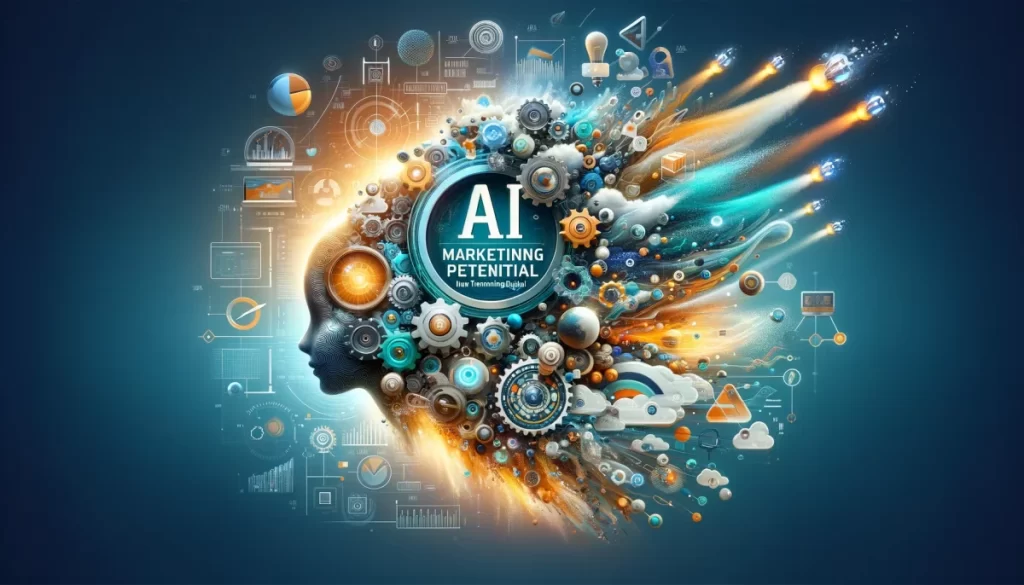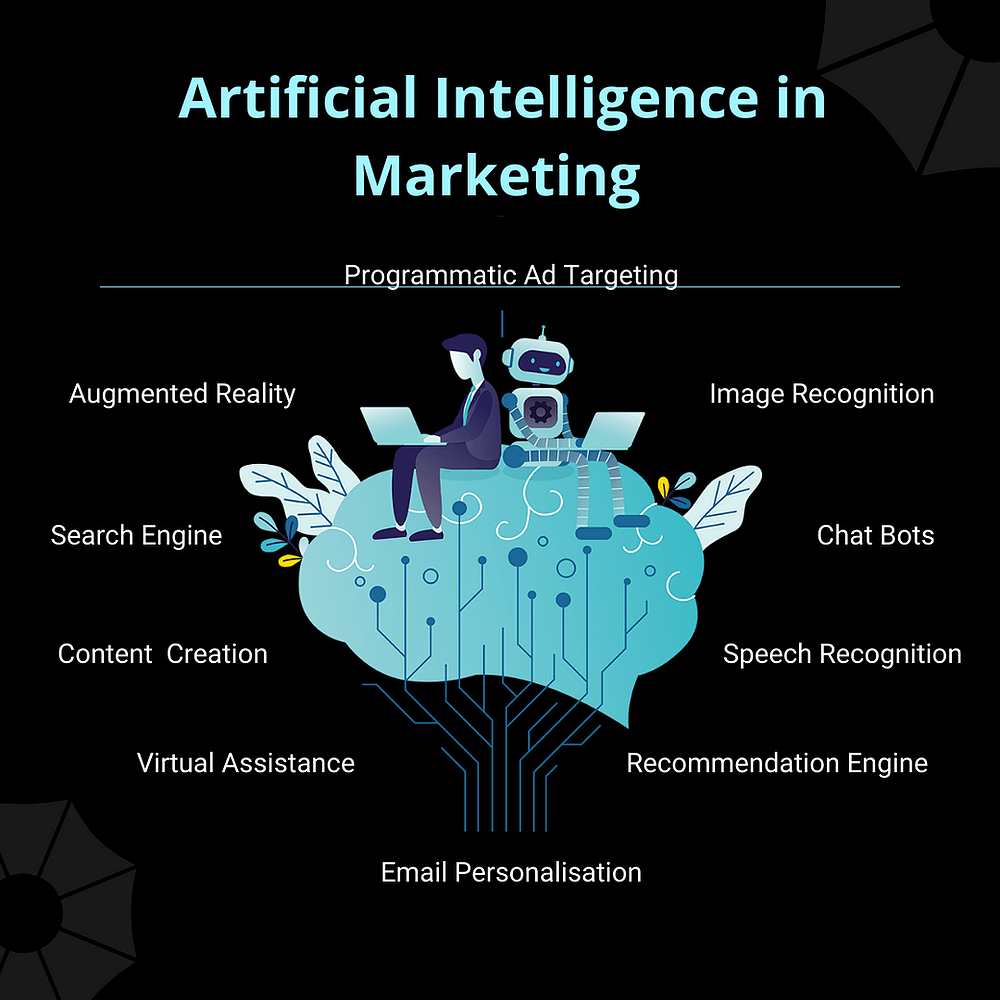In our rapidly evolving digital age, AI’s influence is reshaping key aspects of marketing, from establishing ethical AI systems to crafting personalized customer experiences. As these intelligent systems become intertwined with our everyday activities, they’re not just streamlining processes and boosting efficiency, but also redefining how we interact and connect. The AI revolution is here, from predicting consumer behavior with machine learning to fostering human-like conversations through chatbots and even spurring creativity in content creation. Harness its potential wisely and let’s explore this transformative journey together.
Playing Fair with AI: Crafting Conscientious Systems
As the magic of artificial intelligence reshapes the marketing landscape, the ethical implications of these potent tools take center stage. Marketers are called to carefully evaluate and lessen risks in areas such as data privacy, algorithmic fairness, and clarity.
While AI systems offer exciting new possibilities, they also come with their own set of challenges. Conscientious management of AI in marketing is key to earning customer trust in a time of intense data scrutiny. Guidelines and best practices are beginning to surface to steer the ethical and responsible creation of AI instruments.
Marketers should regularly check their AI systems for potential problems like unjust bias and lack of clarity. AI is only as impartial as the data it learns from, so guaranteeing diverse and inclusive training data is essential. Rigorous data privacy rules and opt-in consent procedures also aid in providing transparency and choice.
Marketing AI is not a magic wand, but rather a chance to amplify human abilities. With meticulous supervision, team collaboration, and a customer-focused approach, brands can utilize AI to build stronger bonds. Ultimately, AI should enhance human judgment and empathy, not supplant them.
The journey forward is not about “revolutionizing” marketing, but about adapting thoughtfully as technology advances. With ethical AI principles lighting the path, inventive tools can assist brands in meeting the evolving needs of consumers.
AI’s Playful Twist: Crafting Unique Experiences with Deep Learning
For a long time, marketers have been singing praises of personalization – the art of customizing messages, product suggestions, and deals for each individual. Mass customization was the first step in this direction, and it did achieve some success. However, the early attempts at personalization were quite basic, depending largely on simple segmentation and rules-based triggers.

Enter artificial intelligence, and the game of personalization has changed dramatically. We now have the power to elevate personalization to never-seen-before heights, a phenomenon we’re calling hyper-personalization. Advanced deep learning algorithms tirelessly sift through customer data from various channels to build comprehensive profiles, capturing behaviors, preferences, motivations, and more. These AI systems decide the next best actions in real-time, delivering experiences so customized they feel like they’ve been crafted just for the individual.
What does this look like in real life? Imagine you’re a regular e-commerce store visitor browsing hiking gear. The site picks up on this interest and the next time you visit, new arrivals in that category are displayed prominently. Or consider a travel app that learns you have a penchant for beach locales and boutique hotels, and promptly highlights matching destinations and properties.
AI personalization isn’t just about product suggestions, it extends to messaging and creative content as well. A financial services company, for instance, can dynamically alter email content based on customer life events and financial needs identified by AI. A B2B firm can tailor its nurture tracks to match the buyer’s stage in their decision journey.
Hyper-personalization hinges on both the quality and quantity of customer data. Deep learning algorithms reveal subtle links within cross-channel data that might even elude analysts. The more comprehensive the view of the customer, the better AI can anticipate desires and respond accordingly.
Granted, most marketers are still in the early stages of their AI-driven personalization journey. But the trailblazers show immense potential. Digital native companies like Netflix and Spotify are setting the standard, thanks to their direct access to extensive customer usage data. However, examples are now cropping up across sectors:
- Retailer Stitch Fix uses deep learning to analyze client preference and transaction data to curate clothing selections for each customer personally. Their “client experience algorithms” evaluate fit, style, and more to continually refine recommendations.
- Disney scrutinizes park visitors’ ride history, food purchases, and other behaviors to offer personalized itinerary suggestions and tailored incentives via its app. This drives attendance across less frequented rides and restaurants.
- Financial provider Wells Fargo targets high-value segment offers and messaging based on AI analysis of account transactions and life stage data. Customers receive content specific to current financial needs.
- Non-profit charity: water uses AI to customize outreach and stewardship communications based on individual donor activity. This ultra-relevant messaging encourages ongoing support.
While it’s still early, hyper-personalization shows immense capability to enhance customer experiences and brand relationships. As algorithms become more accurate and additional data is incorporated, expect experiences to become exponentially more tailored.
Of course, personalized AI must be applied judiciously and transparently to maintain consumer trust. But when used ethically, deep learning sets the stage for the next generation of intimate, meaningful customer engagements.
Boosting Efficiency in Campaign Creation with AI
Marketing teams are often under the gun to craft highly tailored, optimized campaigns across all channels and formats. Regrettably, a significant chunk of their time is consumed by repetitive, tactical tasks, leaving little room for strategic thinking. AI offers a solution to automate labor-intensive campaign elements such as budget distribution, testing variations, and media buying.
Smart algorithms can process massive amounts of data to determine the best budgets for each campaign and asset. They test a plethora of creative variations to pinpoint which images, calls to action, and messaging strike a chord with each audience. Even the tedious task of implementing changes across platforms is taken care of by bots. This efficiency allows marketers to channel more energy into understanding customers, weaving compelling narratives, and crafting innovative experiences.
Take the cosmetics brand MAC for instance. MAC uses AI to sift through years of historical data and swiftly test promotional combinations. The algorithm spots the top-performing options and rolls out tailored campaigns 30 times quicker than human marketers could. This not only boosts sales but also liberates the team to concentrate on the art of makeup.
While AI is adept at managing routine marketing tasks, the human touch in creativity, empathy, and judgement is still indispensable. The trick lies in leveraging automation to speed up campaign creation while still preserving opportunities for human marketers to flex their strengths. Striking the right balance, brands can scale personalized engagement efficiently without sacrificing quality or losing the human element.
Gaining a Competitive Edge with AI Predictions
Today’s savvy marketers are harnessing the power of predictive artificial intelligence, not just relying on intuition or past performance. Advanced machine learning algorithms reveal hidden patterns in consumer behavior and highlight untapped engagement opportunities. This results in more focused marketing strategies, efficient campaigns, and a significantly more personalized customer experience.
Take retail giant Target, for example, an early adopter of predictive analytics. By meticulously analyzing purchase data, Target’s AI could accurately predict when a customer was expecting a baby—sometimes even before they made it public! The AI then sent out customized promotions to influence purchasing habits during these life transitions. Through predictive insights, Target forged enduring relationships with new parents.
AI is revolutionizing prediction in three main areas:
Hyper-Personalization
Combining detailed customer profiles with machine learning allows for the delivery of highly relevant content, offers, and recommendations—without customers having to explicitly request them. Spotify, Netflix, and Amazon were the trailblazers of this level of personalization. Now, businesses of all sizes can leverage this capability.
Customer Propensity Scoring
Advanced algorithms categorize customers based on their likelihood to engage in key activities such as purchasing, unsubscribing, or responding to campaigns. Identifying potential leads helps marketers focus on higher-value segments. AI propensity models can boost conversion rates by 10-30%.
Forecasting and Targeting
By delving into the AI’s black box, marketers can anticipate future trends. Economic fluctuations, supply chain disruptions, even climate change—AI integrates diverse data to minimize uncertainty. And as machine learning continuously learns from new data, forecasts become increasingly accurate.
However, with this power comes a significant responsibility. Marketers must ensure transparency in AI decision-making to foster trust with customers. Clarifying the “why” behind personalized content or offers is crucial. AI models should also be periodically reviewed for unintended bias. Responsible AI adoption, balanced with customer empathy, paves the way for the next marketing era.
While AI prediction opens up new possibilities, the customer remains king. Technology aids marketing goals but should never overshadow human relationships. With AI as a partner, the future is promising for strategic marketers who keep customers at the core of every decision. Are you ready to lead your industry by anticipating needs faster and more accurately than competitors? The time to harness AI’s potential is now.
Making Connections: Building Rapport Through Conversational AI
Chatbots and virtual assistants are no longer the stiff, scripted tools of yesteryears. Thanks to natural language processing (NLP), they can now understand context and sentiment, paving the way for more organic, empathetic dialogues. Instead of merely reacting to keywords, advanced NLP empowers bots to grasp the essence of a conversation and respond appropriately.
Progressive brands are honing the conversational tone of their bots. Their bots seek clarity when in doubt, gracefully accept errors, and prioritize being useful above everything else. The aim is not to bamboozle customers with clever responses, but to build a relationship of trust and understanding. As a retail CEO aptly put it, “Our bot sounds like it could be another person in the store asking how they can help.”
Achieving this equilibrium necessitates training AI on human conversation patterns. Bots need to discern when a brief response is adequate and when more elaboration is required. Alternating between detailed explanations and swift affirmations keeps the conversation engaging and realistic. As AI conversation evolves, the aspiration is not to trick people into believing they’re interacting with a human. Instead, the goal is to make the interaction as genuinely helpful as a human one.
Unleashing Creativity: The Budding Influence of AI in Content Crafting

Artificial intelligence is opening up fascinating new avenues to bolster human inventiveness in content creation. AI tools have the ability to sift through data to pinpoint potential content themes, whip up preliminary drafts, and even fabricate rudimentary visual elements. Brands are starting to dip their toes into the realm of AI-driven content creation.
Take Forbes Tate Partners, for instance, who employ the Writesonic tool to generate initial drafts of specific content forms. The AI proposes topics grounded in client objectives, delves into concepts, and pens a basic outline for human editors to polish. This semi-automated method frees up more time for strategic communication while preserving quality assurance.
On the visual front, tools like DALL-E 2 and Midjourney can instantly conjure images from text cues. While this is intriguing for social posts, AI art falls short of the intentionality found in human creations. The most effective use is to employ AI images as a catalyst to ignite creative thought.
Text and image creation is merely the tip of the iceberg for AI creativity. As the technology evolves, it might one day emulate human style, discernment, and craftsmanship. But for the time being, the wisest course of action is a partnership between AI and humans – leveraging the strengths of each. The future holds exciting prospects if we concentrate AI efforts on augmenting, rather than supplanting, the inimitable human imagination.
Harnessing the transformative power of AI, marketers can craft more conscientious systems, personalize experiences, boost efficiency, predict trends, and enhance conversations. While AI offers impressive potential, maintaining a human touch in creativity, empathy and judgement remains key, paving the way for a future where technology augments, rather than supplants, our unique human capabilities.



